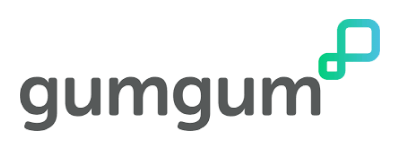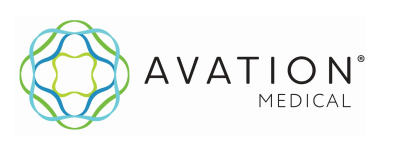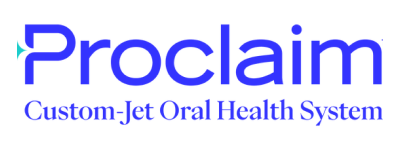Patient-Friendly Nerve Simulation Therapy Platform Resolves OAB Challenges with AWS-Based Centralized Logging Solution
Our customer is an innovative healthcare technology provider, dedicated to improving lives of patients. Their wearable Ankle Garment, provides bladder control therapy and mobile app to treat patients suffering from the chronic conditions of Over Active Bladder (OAB) and Urge Urinary Incontinence (UUI). It is a, drug, needle, and surgery free at-home therapy, providing digital behavioural health support system, with personalized treatment calibrated to the patient’s own EMG signals.
Challenges
- Existing app logs were residing within the mobile apps and portal servers, causing difficulties in maintaining and troubleshooting the system.
- There was a need to have a centralized logging and monitoring solution for data triaging and troubleshooting.
- Capability for real-time log analysis was required to quickly identify and address issues.
- Data triaging based on different entities and domains (region, client, OS type, version, etc.), was a complex task.
- Segregation of logs was needed for meaningful context driven error analysis and to avoid unnecessary data clutter.
- Streamlining and collating application logs from various sources was needed for overall analytics and reporting.
Solutions
- Building a scalable and robust instrumentation data pipeline with log streaming for APM (Application Performance Monitoring).
- Creating insightful dashboards and monitoring alerts for efficient data visualization, analysis and real-time monitoring.
- Building an efficient data processing pipeline to stream and process data from different sources (patient’s app, clinician and admin web portal, firmware etc).
- Defining data retention policies and index patterns to ensure data archival and easy data access.
- Tracking session data with correlation ids to quickly identify, isolate and address user specific and overall performance and latency issues.
Impact Generated
- Unified and centralized logging and monitoring.
- Proactive issue identifications via alerts and dashboards.
- Optimized triaging and troubleshooting capabilities, improving dev team utilizations and reducing time needed in the daily operations by ~15%.
- Facilitating more effective and optimized 24/7 monitoring and coverage.
- Cost optimization on storage and processing, with cost reduction of about ~12%.
- Improved issue diagnosis time, helping meet SLA’s.
-
Related Stories
The technology consistently delivered on its promises.
Earlier this year, I partnered with Zimetrics to integrate AI automation into our document review process for our car subscription service. I wholeheartedly endorse both Zimetrics, the Zimetrics team, and their top-tier tech. Our challenge was two-fold: 1. We needed AI to streamline our document processing for customer applications. 2. We wanted to enhance our digital customer experience. Zimetrics' 8Nap AI platform was the answer. The technology consistently delivered on its promises. The model training process, which often can be complex and intricate, was remarkably straightforward. The AI quickly adapted to the diverse documents we handle, maintaining high accuracy. Surprisingly, even with a modest set of example documents, we accomplished a thorough model training. The integration process was smooth, and the platform allowed for quick customizations to fit our specific needs, all while upholding strict security and compliance standards. Special credit goes to the Zimetrics team. Their expertise and professionalism shone through from day one. But it was their dedication to our needs that truly stood out. They ensured open communication, clear planning, and consistently met our timelines. In summary, I strongly recommend Zimetrics and their 8Nap AI platform. Their technology is impressive, and their team is a valuable partner to any business. I eagerly look forward to further incorporate their AI-powered automation technology into all our document-centric processes.
David Kaganovsky
Chief Technology Officer
GO Subscription

Genuine commitment to client success
Zimetrics consistently delivers outstanding customer service, combining responsiveness with a genuine commitment to client success. Their team is passionate about working with cutting-edge technologies and goes out of their way to support our software and teams. Within a relatively short period of working with them, we have been able to transition one of our functions completely to them.
Vaibhav Puranik
Sr. Vice President of Global Engineering
GumGum

Big part of our success story
At Avation Medical, we truly value our partnership with Zimetrics. Their team brings a wealth of knowledge in all aspects of healthcare software including firmware, mobile apps, cloud data, DevOps and eCommerce, which greatly helped us with seamless integration. The team runs projects efficiently, independently and diligently, with clear understanding of business and patient needs. It has been my pleasure to work with Zimetrics, as they continue to be a big part of our success story.
Manish Vaishya
Chief Technology Officer
Avation Medical


Professionalism and Expertise
Zimetrics has proven to be an excellent offshoring partner, providing us with skilled engineers from India. Their team's contributions have significantly enhanced our projects, and their professionalism and expertise have made collaboration seamless. We value our partnership with Zimetrics for the quality and reliability they bring to our extended team.
Ken Weiner
Chief Technology Officer
GumGum



A partner who I can rely on
I have worked with Zimetrics to develop several very complex, customer-facing solutions, and in the process I've learned what makes Zimetrics valuable and rather unique as a software service provider. Zimetrics strives to create very engaged engineering teams that really understand what my business needs including my customers. And they have all the software service categories to handle most any problem I've asked them to solve, including application development, real-time cloud telemetry, manufacturing systems and embedded diagnostics. With Zimetrics I have a partner who I can rely on to deliver, and who invests in my company's successes for the long-term.
Brent Goldstein
Vice President, R&D - Software & Additive Products
Fresh Health


Deep Expertise, Complete Ownership, Specialized Consulting
Zimetrics played an instrumental role in a high-tech solution for us, involving diverse Big Data technologies with high-performance engineering and web-scale considerations. Besides everything else, what stood out was their breadth of expertise, their deep skill level, and a comprehensive consultative approach with a keen customer success focus.
Vice President, Engineering & RnD Division
A Global Consumer Electronics Major


One word: Awesome!
Zimetrics partnered with us to build an analytics platform for our stealth mode startup, which aims to disrupt the call center industry. The experience of working with Zimetrics has been pure joy and the planning, timeliness, quality, thoughtfulness, cost and impeccable execution has put us on a very strong footing. I must also confess that it has been a personally very humbling experience for me, as before meeting the Zimetrics team, I used to consider myself to be an expert in Business Intelligence - Just Sign up!
Manish Panjiar
Founder & CEO
XTaaS Corporation


Unlock faster growth & intelligence.
